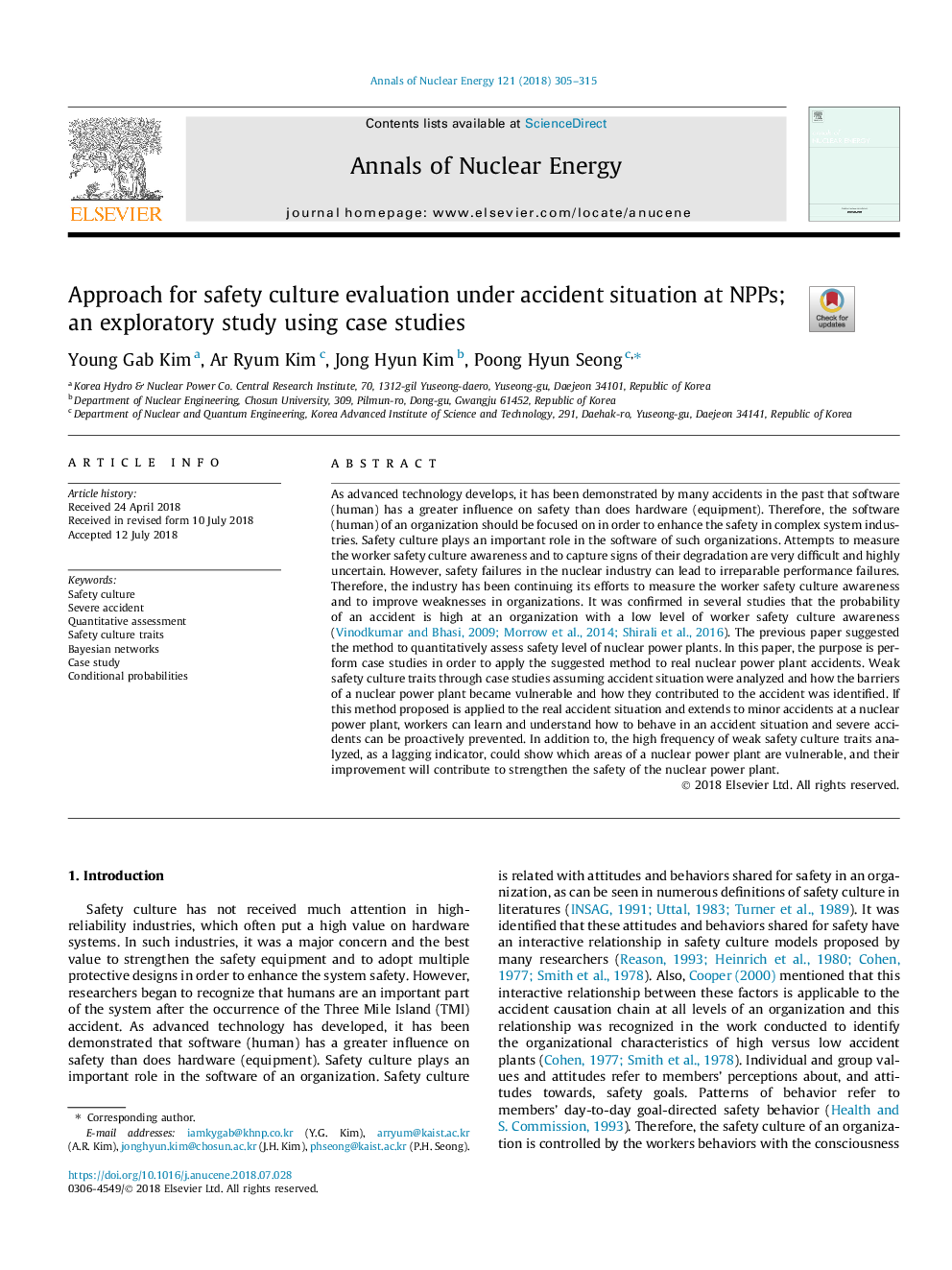| Article ID | Journal | Published Year | Pages | File Type |
|---|---|---|---|---|
| 11007332 | Annals of Nuclear Energy | 2018 | 11 Pages |
Abstract
As advanced technology develops, it has been demonstrated by many accidents in the past that software (human) has a greater influence on safety than does hardware (equipment). Therefore, the software (human) of an organization should be focused on in order to enhance the safety in complex system industries. Safety culture plays an important role in the software of such organizations. Attempts to measure the worker safety culture awareness and to capture signs of their degradation are very difficult and highly uncertain. However, safety failures in the nuclear industry can lead to irreparable performance failures. Therefore, the industry has been continuing its efforts to measure the worker safety culture awareness and to improve weaknesses in organizations. It was confirmed in several studies that the probability of an accident is high at an organization with a low level of worker safety culture awareness (Vinodkumar and Bhasi, 2009, Morrow et al., 2014, Shirali et al., 2016). The previous paper suggested the method to quantitatively assess safety level of nuclear power plants. In this paper, the purpose is perform case studies in order to apply the suggested method to real nuclear power plant accidents. Weak safety culture traits through case studies assuming accident situation were analyzed and how the barriers of a nuclear power plant became vulnerable and how they contributed to the accident was identified. If this method proposed is applied to the real accident situation and extends to minor accidents at a nuclear power plant, workers can learn and understand how to behave in an accident situation and severe accidents can be proactively prevented. In addition to, the high frequency of weak safety culture traits analyzed, as a lagging indicator, could show which areas of a nuclear power plant are vulnerable, and their improvement will contribute to strengthen the safety of the nuclear power plant.
Keywords
Related Topics
Physical Sciences and Engineering
Energy
Energy Engineering and Power Technology
Authors
Young Gab Kim, Ar Ryum Kim, Jong Hyun Kim, Poong Hyun Seong,
